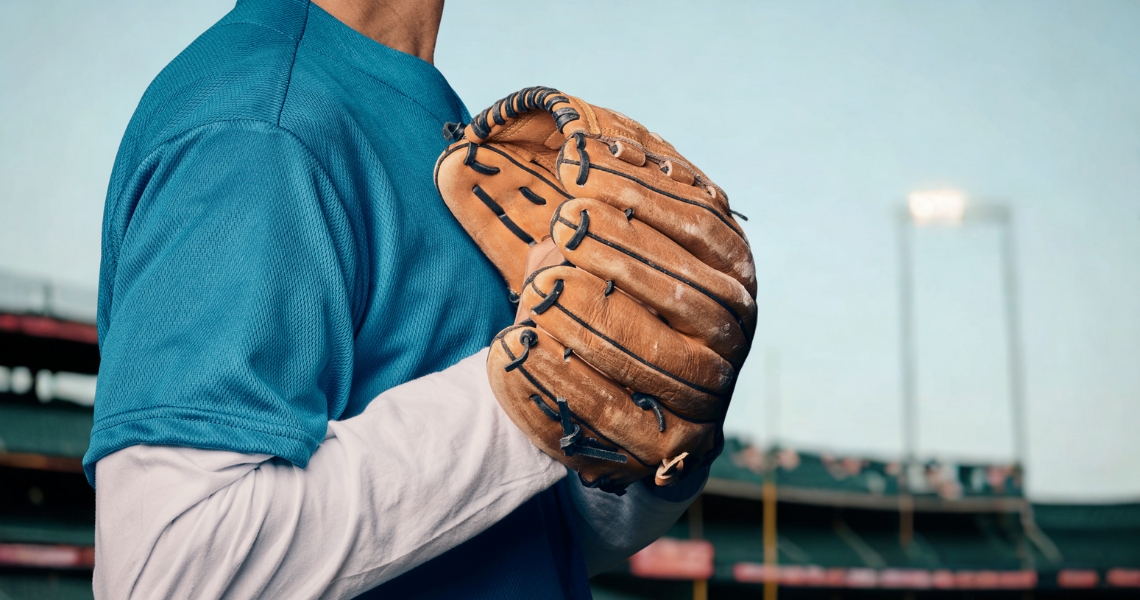A baseball glove is one of the most personal pieces of equipment a player can own. Whether it’s your first glove or your fifth, breaking it in properly can make the difference between confidence on the field and costly mistakes. A stiff glove can lead to bobbled grounders, missed catches, and awkward transitions. But while everyone wants a glove that’s game-ready fast, rushing the process can ruin the leather, alter the shape, and reduce its lifespan.
This guide outlines the right way to break in a new glove—especially one made from premium or custom materials—so it feels natural, performs well, and lasts for seasons to come.
Why Breaking In a Glove Matters
When a glove comes out of the box, it’s stiff, tight, and unformed. The leather hasn’t conformed to your hand, the pocket hasn’t taken shape, and the hinges don’t close easily. That’s because it was built to last—but built to be broken in.
A properly broken-in glove becomes an extension of your hand. It closes easily where you need it to. It molds around your grip and catching patterns. It feels comfortable and responsive. It also helps you build confidence with your transfers, especially in fast-paced plays.
If the glove is custom-made, breaking it in with care is even more important. The higher-quality leather used in custom gloves typically requires more effort to soften but holds its shape and structure far better over time.
Step 1: Apply Glove Conditioner or Oil
Start by applying a small amount of glove conditioner or oil. Use only products made specifically for baseball gloves. A thin layer is all you need to begin loosening the leather and making it more pliable.
Rub the conditioner evenly into the following areas:
- The pocket and palm
- Finger joints and hinges
- Webbing and laces
Be careful not to overdo it. Too much conditioner can oversaturate the leather, making it spongy or weakening the structure over time. After applying, let the glove sit for a few hours to absorb the conditioner before moving on.
Step 2: Form the Pocket
The pocket is where the ball naturally settles during catches, and shaping it correctly early on is critical. Place a baseball in the pocket and close the glove around it, using a belt, sock, or band to hold it in place.
Let the glove sit wrapped for at least 24 to 48 hours. This step helps encourage the glove to form a natural pocket exactly where you want it. You can repeat this process several times during the break-in period.
The shape of the pocket can vary depending on your position. Infielders may want a shallow pocket for quick transfers, while outfielders may prefer a deeper one for secure catches. This step helps define that early.
Step 3: Play Catch and Build Repetition
The most effective and natural method for breaking in a glove is using it consistently. Play catch with it as often as possible. Each throw helps stretch the leather, deepen the pocket, and soften the glove’s movement.
During these sessions, focus on catching the ball in the same area to reinforce the pocket’s shape. Squeeze the glove closed between plays. Keep flexing the hinges and manipulating the leather to improve flexibility.
You’ll begin to feel the glove respond better and close more naturally after a few days of regular use. This approach takes longer, but it builds long-lasting shape and comfort.
Step 4: Use a Glove Mallet (Optional)
For players who want to speed up the process without cutting corners, a glove mallet is a helpful tool. Designed specifically for gloves, mallets allow you to simulate real impact and help shape the glove safely.
Use the mallet to:
- Pound the pocket to deepen and soften it
- Strike the fingers to loosen the hinge points
- Work the webbing to help define its movement
Avoid using hard objects like hammers or tools not designed for glove break-in. These can flatten the padding or crack the leather. If you use a mallet, pair it with consistent catch sessions for best results.
What to Avoid
Many quick-fix methods can do more harm than good. Avoid the following:
- Heating the glove in an oven or microwave
- Soaking it in hot water or leaving it submerged
- Beating it with a hammer or stepping on it
- Leaving it in a hot car or garage for extended periods
These shortcuts may soften the glove temporarily, but they compromise the leather, warp the structure, and lead to early breakdown. Once the damage is done, it can’t be reversed.
Post-Break-In Care
Once your glove feels broken in and game-ready, it’s important to maintain its shape and condition. After every practice or game, store the glove with a ball in the pocket and wrap it loosely to help retain the shape.
Keep it in a cool, dry place, and avoid leaving it exposed to heat or moisture. Wipe off dirt and sweat after each use, and condition it lightly every few months to keep the leather from drying out.
These small habits will extend the life of your glove and preserve its performance for seasons.
Special Considerations for Custom Gloves
Custom gloves are made from premium leather and often built to tighter tolerances. That means they will take longer to break in—but they’re built to last longer too.
Because the materials are more durable, you’ll need to follow all the recommended steps with consistency. Play catch often, condition sparingly, and allow more time for the glove to soften naturally. The reward is a glove that will perform exactly the way you designed it—and do so for years to come.
Don’t try to rush the process. Custom gear deserves custom care.
Frequently Asked Questions
A: Breaking in a glove softens the stiff leather, forms the pocket, and makes it close naturally. This improves comfort, control, and performance. Rushing or skipping the process can damage the glove or shorten its lifespan.
A:
- Apply a small amount of glove conditioner or glove-specific oil (never over-saturate).
- Let the glove absorb the conditioner for a few hours.
- Place a baseball in the pocket and wrap the glove with a belt, sock, or band for 24–48 hours to shape it.
A: Yes. Playing catch regularly is the best and most natural method. It stretches the leather, deepens the pocket, and loosens the hinges gradually while helping you build muscle memory for catching.
A: Yes. A glove mallet safely simulates real impact and helps shape the pocket, fingers, and webbing. Avoid using hard tools like hammers, which can damage the glove.
A: Stay away from shortcuts that ruin the leather:
- Heating in ovens or microwaves
- Soaking in hot water
- Beating with a hammer
- Stepping on the glove
- Leaving it in a hot car
These can permanently damage the glove’s structure.
A: Depending on leather quality and use, it usually takes a few weeks of consistent play and conditioning for the glove to feel game-ready.
A:
- Store with a ball in the pocket, loosely wrapped, to maintain shape.
- Keep in a cool, dry place.
- Wipe off dirt and sweat after each use.
- Condition lightly every few months to keep leather healthy.
A: Yes. Custom gloves often use premium leather that:
- Requires a longer break-in period
- Benefits from sparingly applied conditioner
- Responds best to consistent catch play
Final Thoughts
Breaking in a glove isn’t just about getting it ready to use—it’s about shaping it into something that fits your hand, your game, and your style of play. The right process takes time, but it protects your investment and gives you a piece of equipment that feels like it was made just for you.
Whether you’re preparing for a new season or just picked up your first custom glove, follow these steps to ensure your glove performs the way it was meant to. A well-broken-in glove becomes part of your identity as a player—and it all starts with how you treat it on day one.
Looking for a glove that’s already designed to match your game? Start building your custom glove today at Boa Customs



